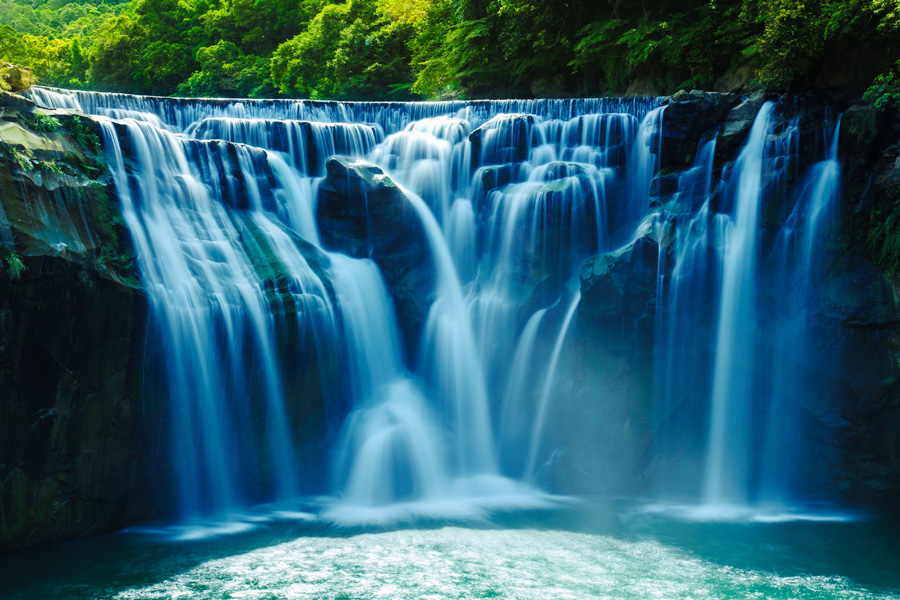[fshow photosetid=72157661003793411]
There are hot springs to be found pretty much all over Taiwan but some places have become centres for ‘hot springing’ due to an abundance of good quality springs and the development of various health and wellness hotels and resorts.
The island has one of the highest concentrations and variety of hot springs in the world with more than 100 individual springs located throughout the country. Three of the main hot spring destinations that are easily accessible from Taipei are Beitou, just a 30 minute train ride from Taipei city centre; Wulai, 20 kilometres south of Taipei; and Jinshan, located on the northern side of Yangmingshan National Park.
Taiwan’s hot springs fall into various categories, not all of which are actually hot. There are sodium carbonate springs, sulphur springs, ferrous springs, sodium hydrogen carbonate springs; mud springs; and salt or hydrogen sulphide springs. Some have clear water, some have more cloudy water, some have water with strong smells while other are odourless. It is believed that due to the high mineral content in the hot springs, the water can help relieve stress, treat chronic fatigue, help with skin and joint problems such as eczema and arthritis as well as raise energy levels.
Beitou
Beitou is arguably the most popular and well visited of all the hot spring areas in Taiwan due to its proximity to Taipei. From the Main Station, take the Red Line heading towards Tamsui. Get off at Beitou station and take the Pink Line one stop to Xin Beitou station. The whole journey takes just 30 minutes.
Beitou was developed by the Japanese during the colonial era from 1895-1945 and those who have been to a traditional Japanese onsen will notice a lot of similarities. Beitou started out as a red light district but the government began cleaning up the area in the late 1980s and today it is one of Taiwan’s most popular tourist destinations. The Beitou Hot Spring Museum is well worth a visit to learn more about the history of the area.
Millennium Hot Springs is arguably the most popular public bath in all of Beitou due to its very affordable price tag at just TWD40 for an entire day. There are others, such as the Long Nai Tang Hot Spring, which is another public bath. Here are several private baths as well but expect a higher price and much smaller baths.
Wulai
Wulai is famous for its clear and odourless water. The high sulphur content of many of Taiwan’s hot springs make them smell like boiled eggs, which can be a bit distracting if you have a sensitive nose. But the majority of the hot springs in the Wulai area seem to have less sulphur content, which makes for smooth odourless baths. The main hot spring here is found at the Wulai Spring Resort, whose open air pools are surrounded by thick jungle and mountainside. For a more casual and family friendly affair, head to the communal hot spring at Guo Chi Yen Hot Spring where children and large groups of friends can be seen soaking it up in the large pools.
The easiest way to get to Wulai is to take a taxi. It will only take around 30 minutes and you arrive relaxed, ready to take on the town’s many hot springs. However, public transport in Taiwan is cheap and affective so for those on a budget, taking the bus might be better. Simply take the MRT to Xindan station on the Xindan Line, then take bus 849 to Wulai, which is the last stop. A ticket costs just TWD15.
Jinshan
Set in close proximity to Yangmingshan Volcanic National Park, Jinshan doesn’t just offer some excellent hot springs, it is also an ideal place for a hike. And what better way to end a challenging day in the hills than by soaking in a hot spring with views over Taiwan’s rugged northern coastline?
The most famous and extensive hot spring resort is Tien Lai, whose sulphur rich waters come with beautiful mountain views. There is also a health club with dry and humid saunas and several food and beverage outlets.
The easiest way to get from Taipei to Jinshan is by taxi. The journey takes around one hour and costs from TWD500.
Tips:
- If visiting a day spa, always ask to see the hot spring before committing to the fee. Some spas will advertise hot springs but the water may only be lukewarm or it may be of a kind that smells.
- Do like others do. If people are wearing a shower cap, do so as well. If the baths are separated by gender, you are expected to go nude.
- Follow common sense. Do not go if you have any health risks, don’t stay in the water too long and don’t go if you are under the influence of alcohol. Be modest and even if you visiting with your boyfriend/girlfriend avoid showing affection in public.

